Why the Dominican Republic is a Chocolate Lover's Paradise
Learn how chocolate is made in the Dominican Republic, where cacao grows best, and why this beautiful Caribbean island is a must-visit for true chocolate lovers
FOOD & DRINK ADVENTURES
3/21/20257 min read
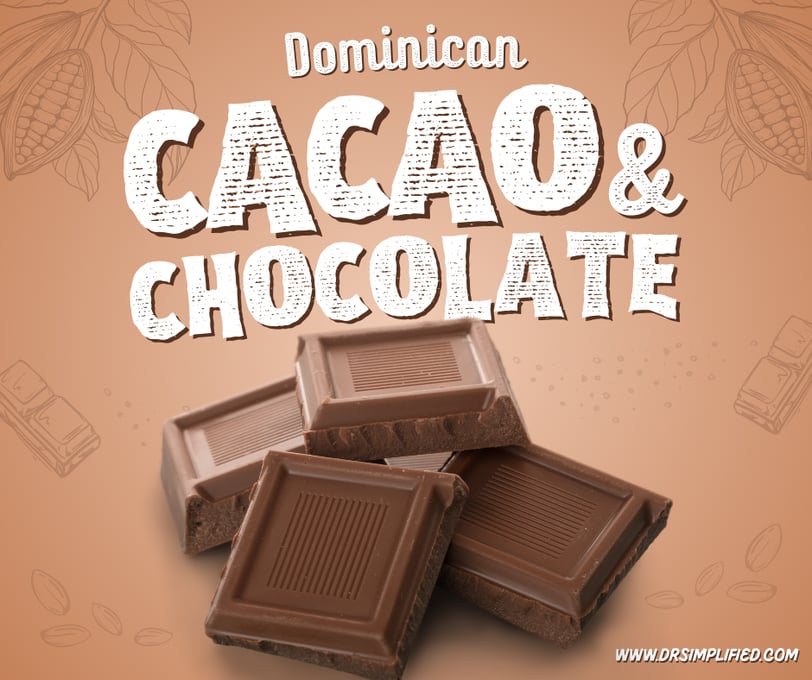

Introduction
When people think of the Dominican Republic, they often picture sunny beaches and lively merengue music. But there is something else special about this Caribbean country. It is also a great place for chocolate lovers. The Dominican Republic grows some of the world’s best cacao and offers unique chocolate experiences for visitors.
Let’s explore the history, how chocolate is made, and some interesting facts that make Dominican chocolate something every traveler should try. And if you're curious to taste and learn even more, there are also fun chocolate tours you can book to see it all in person.
A Sweet History: From the Taíno to Today
Chocolate in the Dominican Republic has a long and rich history. It all started with the Taíno people, the first to live on the island. They grew cacao trees and used the beans to make special drinks during ceremonies. They also used cacao as a form of money to trade with others.
When the Spanish arrived in the 1600s, they brought new tools and farming methods. This helped cacao farming grow. By the 1800s, cacao had become one of the country’s most valuable crops. It was sold to other countries and helped many local farmers earn a living.
Over the years, Dominican cacao farmers faced many challenges, such as plant diseases, storms, and changes in prices. But they stayed strong and kept improving their farming skills. Today, many farms use organic and fair-trade methods, which are better for the environment and local communities.
The Dominican Republic is now one of the top producers of high-quality cacao in the world. Many famous chocolate brands use Dominican beans because of their excellent taste and aroma. Cacao from the DR is often described as having fruity, nutty, or spicy flavors, depending on the region it comes from.
From Bean to Bar: How Dominican Chocolate is Made
Have you ever wondered how cacao beans turn into the delicious chocolate we love? In the Dominican Republic, chocolate is made using traditional methods that bring out its rich flavor. Here’s a simple step-by-step look at the process:
✅1. Harvesting: Farmers pick ripe cacao pods by hand. Inside each pod, there are cacao beans covered in a sweet, white pulp.
✅2. Fermentation: The beans and pulp are placed in wooden boxes or covered with banana leaves for a few days. This step helps develop the chocolate’s deep flavors.
✅3. Drying: After fermentation, the beans are spread out under the sun to dry. Farmers turn them regularly to make sure they dry evenly. This step reduces moisture and improves the taste.
✅4. Roasting: Once dry, the beans are roasted to bring out their rich chocolate smell and taste. The way they are roasted affects the final flavor.
✅5. Winnowing: The roasted beans are cracked open to remove the hard outer shells. What’s left inside are cacao nibs, the part used to make chocolate.
✅6. Grinding and Conching: The nibs are ground into a thick paste called cocoa mass. This paste is mixed and refined to make it smooth and ready for making chocolate bars and other treats.
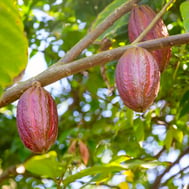
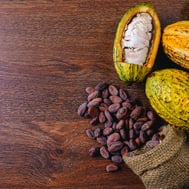
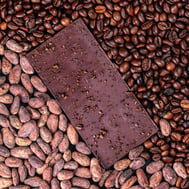
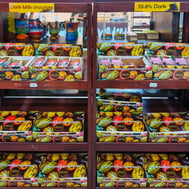
Where Cacao Grows Best: Key Regions in the Dominican Republic
The Dominican Republic is an excellent place for growing cacao trees, thanks to its warm climate, rich soil, and regular rainfall. These conditions help produce high-quality cacao beans that are used in chocolates worldwide. Here are the main regions where cacao thrives:
1. Cibao Valley
Located in the northern part of the country, the Cibao Valley is known for producing the Hispaniola cacao bean. This bean is famous for its strong flavor and high quality. The valley's fertile soil and favorable weather make it ideal for cacao farming. Many small family farms here focus on organic and fair-trade practices, ensuring sustainable and ethical production.
2. Samaná Peninsula
On the northeastern coast lies the Samaná Peninsula, celebrated for its Sánchez cacao beans. These beans are appreciated for their mild flavor with hints of nuts and spices. The region's tropical climate and dedication to traditional farming methods contribute to the unique taste of its cacao.
3. Duarte Province
Duarte Province is home to Reserva Zorzal. This reserve emphasizes sustainable farming and environmental conservation. Farmers here grow cacao in harmony with nature, protecting local wildlife while producing top-quality beans. The reserve collaborates with international chocolate makers who value ethical sourcing and eco-friendly practices.
4. Other Notable Regions
Cacao cultivation also thrives in provinces like El Seibo, Hato Mayor, and Monte Plata. These areas host numerous small and medium-sized farms, many of which use traditional, chemical-free farming techniques. Their dedication ensures the preservation of the rich flavors unique to Dominican cacao.
Top Chocolate Makers Using Dominican Cacao
Several renowned chocolate brands around the world value the fine flavor of Dominican cacao and incorporate it into their products:
Lindt & Sprüngli: This Swiss chocolatier uses Dominican cacao in some of its premium chocolate lines, appreciating its rich and diverse flavor profile.
Valrhona: A French luxury chocolate manufacturer that sources high-quality cacao beans from the Dominican Republic for its gourmet chocolates
Raaka Chocolate: This U.S.-based brand offers unroasted dark chocolate bars made from Dominican cacao, showcasing the beans' natural flavors.
Theo Chocolate: Based in Seattle, Theo Chocolate sources organic cacao from the Dominican Republic for its fair-trade certified products.
Vivani: A German brand that creates organic chocolates, sourcing cacao from the Dominican Republic to ensure premium quality.
Kah Kow: Produced by Rizek Cacao S.A.S. in the Dominican Republic, Kah Kow offers a range of chocolate products made from locally grown cacao beans.
Cacaoteca: An award-winning Dominican chocolate brand that emphasizes ethical production and showcases the island's exceptional cacao flavors.
Health Benefits of Dominican Chocolate
Dominican chocolate is not only delicious, it is also good for your health. Eating a little dark chocolate from time to time can help your body and mind in several ways.
✅ Rich in antioxidants: Dark chocolate is full of flavonoids that help protect your body from damage and reduce inflammation.
✅ Supports heart health: Eating small amounts of chocolate may lower blood pressure and help blood flow better.
✅ Improves your mood: Chocolate has natural chemicals like serotonin that can help you feel more relaxed and happy.
✅ Good for your skin: The antioxidants in cacao may protect your skin from sun damage. Just remember, sunscreen is still important in the Dominican Republic.
✅ Boosts brain function: The flavonoids in cacao are linked to better memory and clearer thinking.
How to Enjoy Cacao and Chocolate During Travel in the Dominican Republic
✅ 1. Take a Chocolate Tour or Masterclass
Whether you want to explore a working cacao farm or get hands-on in the kitchen, there’s a chocolate experience for everyone.
✅ 2. Try Local Chocolate While Exploring
You’ll find chocolate all over the country as you explore, shop, and dine.
In Restaurants and Cafés: In tourist areas like Punta Cana, Santo Domingo, Las Terrenas, and Puerto Plata, many local restaurants serve desserts made with Dominican chocolate. Look out for:
Chocolate mousse or rum-infused chocolate cake
Chocolate tres leches or cacao brownies
Traditional hot chocolate served at breakfast in rural areas
Want to make sure it’s local? Just ask: “¿Este postre tiene chocolate dominicano?” (Does this dessert have Dominican chocolate?)
Supermarkets and Gift Shops: Local supermarkets like Supermercado Nacional, La Sirena, and Carrefour usually stock Dominican chocolate.
✅ 3. Experience Chocolate at Your Resort
Many resorts in the Dominican Republic highlight local chocolate in creative and relaxing ways:
Spa Treatments – Some spas offer chocolate body wraps, cacao facials, or massages using cocoa butter.
Gourmet Desserts – High-end resort restaurants often use local cacao in their desserts, especially for special dinners or themed nights.
Ask your concierge or activity desk what chocolate-inspired experiences your resort offers, you might be surprised!
Bonus Tip: Dominican chocolate is more than a sweet treat, it’s a meaningful souvenir. Choose organic, fair-trade, or cooperative-made products to support local farmers and communities while enjoying top-quality cacao.
FAQs About Dominican Cacao and Chocolate
What are some popular Dominican chocolate brands?
Here are a few local chocolate brands that travelers love:
Kah Kow – High-end, organic bean-to-bar chocolate
Definite Chocolate – Award-winning and small batch
Xocolat – Great for tropical flavors and gift sets
Chocal – Handmade by a women’s cooperative in the northern region
Where is the best place to buy Dominican chocolate?
The best places to buy Dominican chocolate are:
Supermarkets like La Sirena, Nacional, and Carrefour – They often carry Kah Kow, Xocolat, and Definite Chocolate at better prices than gift shops.
Chocolate boutiques such as Kah Kow Experience (Santo Domingo) and Xocolat Café.
Artisan markets and cacao tours – You can buy fresh chocolate directly from small producers and support local makers.
Avoid overpriced chocolate in tourist souvenir shops if you want the best quality and value.
How much chocolate can I bring home?
You can bring chocolate home for personal use with no problem. If you're flying to the U.S. or Canada, there's no restriction on packaged chocolate. Just make sure it’s sealed.
Can I take chocolate in my carry-on?
Yes, solid chocolate is allowed in both your carry-on and checked bags. If you're bringing soft-filled or liquid chocolate (like a jar of spread), it must be under 3.4 oz (100 ml) if it's going in your carry-on due to airport security rules.
What chocolate souvenirs should I look for?
Some great chocolate-related souvenirs to bring home include:
Artisan chocolate bars from Kah Kow or Definite Chocolate
Cacao nibs or cacao tea
Handmade cacao balls used for traditional Dominican hot chocolate
Locally made chocolate truffles or rum-infused bars
Chocolate skincare products like cacao butter soaps and lotions
Learn More About Chocolate
If you want to keep learning about chocolate, there are some great books you can read.
Chocolate: Sweet Science & Dark Secrets of the World's Favorite Treat by Kay Frydenborg
This book shares interesting facts, history, and the science behind chocolate. It's great for both kids and adults who want to know more.
Find it on AmazonChocolate Unwrapped: Taste & Enjoy the World's Finest Chocolate by Sarah Jane Evans
This guide talks about chocolate from around the world. It explains different flavors and tells the stories behind the people who make it.
Find it on AmazonThe Journey of the Bean: From Cacao to Chocolate by Samuel Mutter
This book takes you through every step of how a cacao bean becomes chocolate. It's easy to understand and great for chocolate lovers of all ages.
Find it on Amazon
Want to keep exploring?
Check out our other guides to learn more about cigars, rum, Mamajuana, and coffee. They’re great souvenirs, delicious gifts, and perfect ways to bring a taste of the Dominican Republic back home with you.
Explore the Dominican Republic with DR Simplified – Your Viator Travel Shop!
Discover the best excursions, cultural experiences, and adventure tours in the Dominican Republic, all handpicked for travelers like you! Whether you're looking for stunning beaches, historical sites, or thrilling activities, our Viator shop offers top-rated tours with trusted guides. Book with ease and make your trip unforgettable!
Terms and Condtions
© All rights reserved 2025
Affiliate Disclaimer
Some links on DR Simplified are affiliate links. If you make a purchase or booking, we may earn a commission at no extra cost to you. Thanks for your support!


